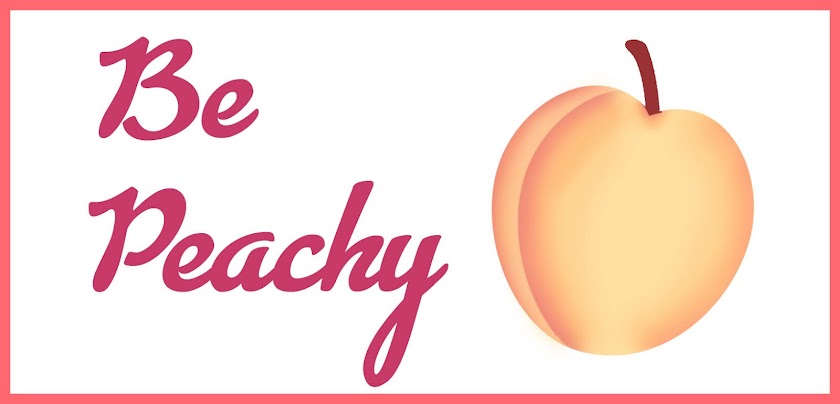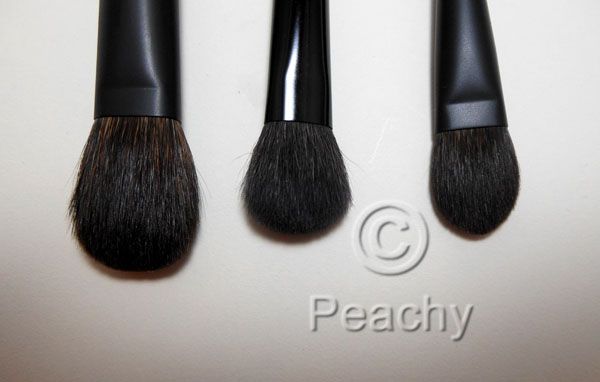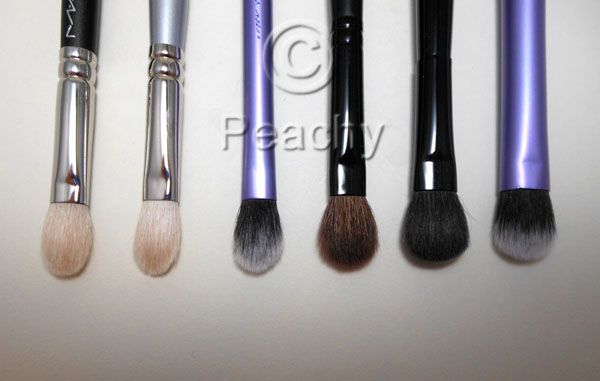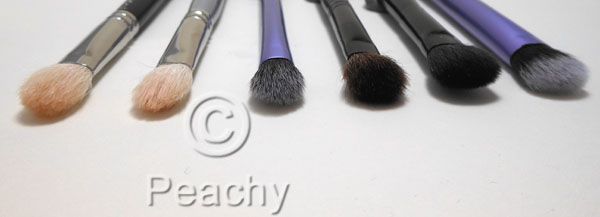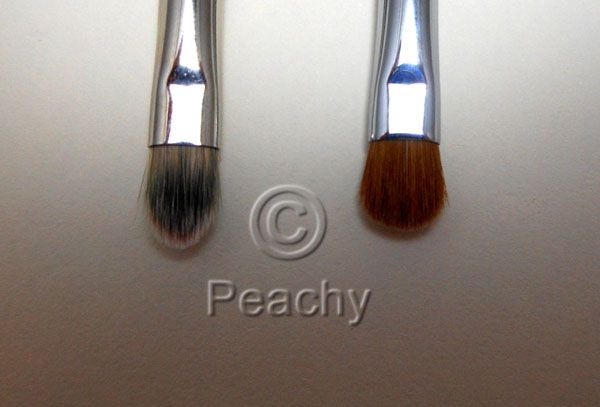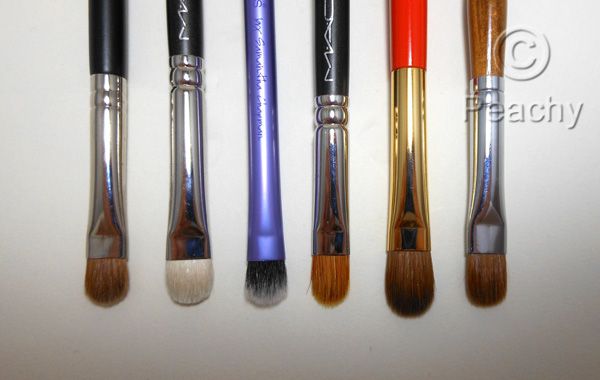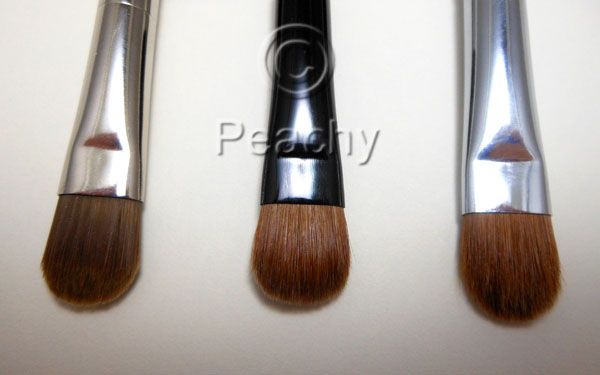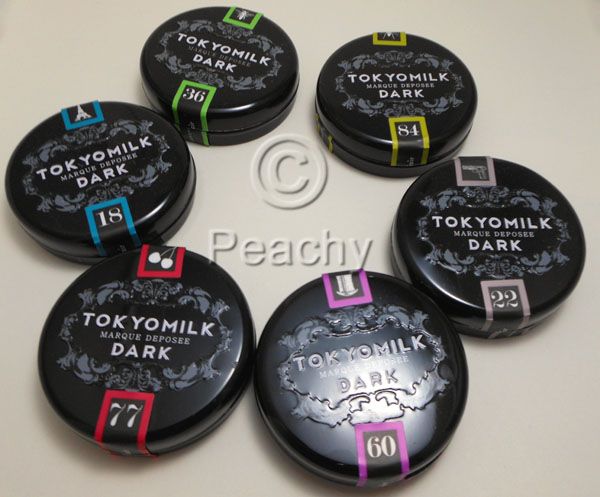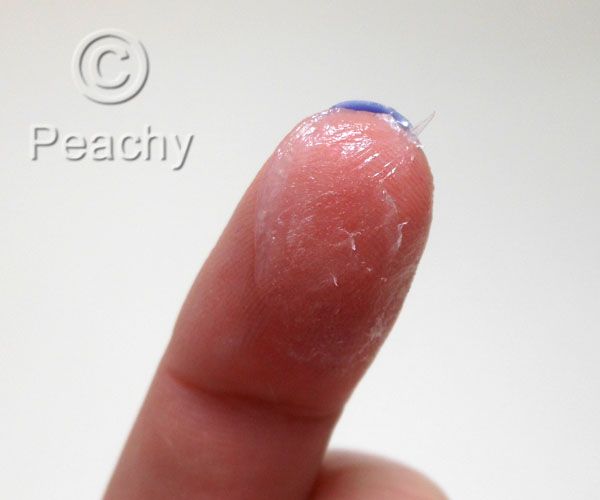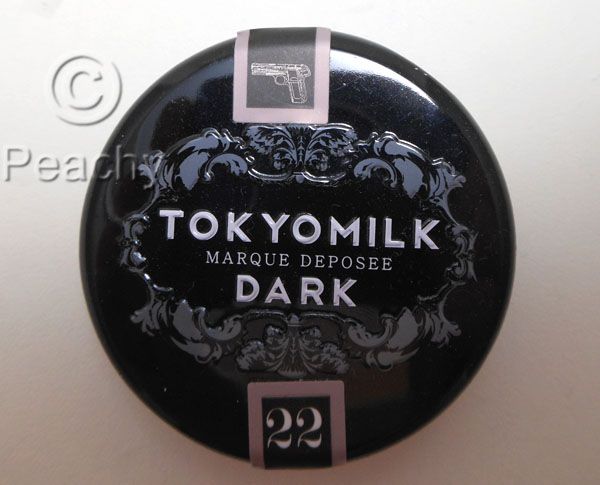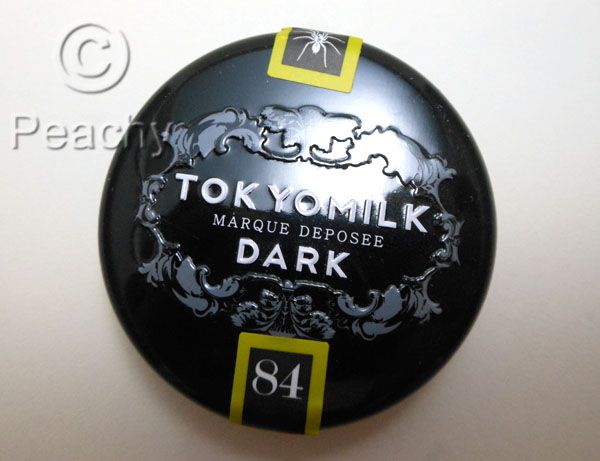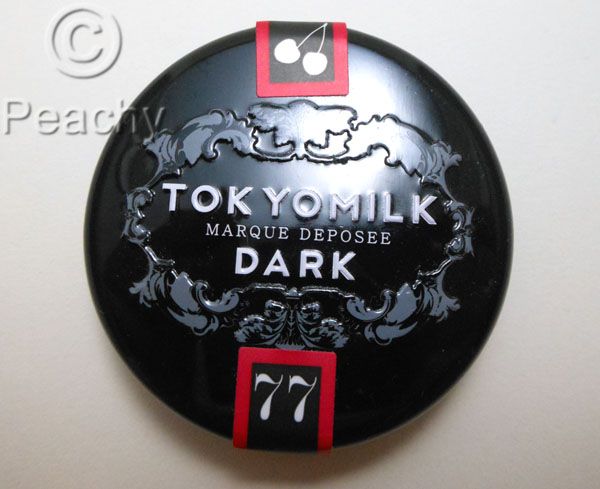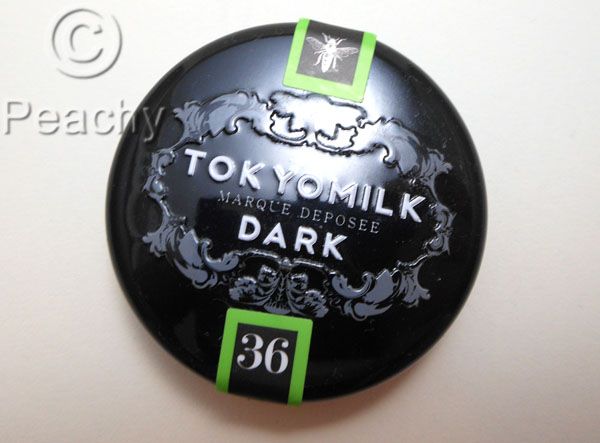Part two of my comprehensive brush guide is blending brushes, which will be separated into two posts themselves. This post features blending brushes with pinched ferrules, while the next post will feature round ferrules. The pinched ferrule makes this set wider than they are thick, so they have two directions to use. The pinched ferrule makes them similar to the previously featured flat shader brushes, but they are all fluffier and thicker, which makes them better suited to blending than the shaders are.
Fluffy Blending Brushes
Here we have three very large blending brushes: Hakuhodo Kokutan L, Paula Dorf Eye Blender, and Kokutan MLL. They're pretty big; the Kokutan L is an inch long, 5/8 inch wide at the ferrule and 1/2 inch thick. The two Hakuhodos are both blue squirrel, and the Paula Dorf is soft too. I wish all brush purveyors would list the hair type on their website. Of course, then they might face the wrath of PETA. Heh. I guess you've noticed these brush posts are not for vegans.
These brushes are all super soft and great for applying a soft wash of color over the whole lid area and for all over blending. Since they're so soft, they're great for heavy handed blenders, but since they're huge, they're terrible for detail blending. I like to use them "off-book" for applying cheek highlighter, blush, and powdering small areas.
Oval Blending Brushes
The be-all and end-all of blending brushes for a lot of people, here we have MAC's classic 217, also a Sephora Pro Oval Blending brush 27, Real Techniques Base Shadow Brush, Sephora Classic blending 29, a Paula Dorf eye shadow brush (sorry; it's from a travel set I've had for forever), and a RT Domed Shadow brush. The two white are goat hair, the two RT's are synthetic and the other two are soft hair of unknown origin. MAC's 217 is a beloved brush by many people, for blending edges, for applying color to all parts of the mobile lid, and for applying to the crease. I think they're great for both blending and applying to the lid, but I almost never use one for the crease. I don't think it suits my own eye shape, but, honestly, I never use it for anyone else's crease either. The goat is good for light touch blenders, a group to which I belong, but if you're heavy handed, you might find the synthetics or a soft hair, like squirrel more suited to your technique. The goat hair also holds up better to cream products.
These blenders are great for applying a smooth gradiant over the lid and into the crease, a feature lacking in flat shader brushes. That makes these useful for smoky eyes and cat eyes (a cat eye, though often a mislabeled doe eye, which is eyeliner that flicks out at the end, is used here to mean eye shadow that emphasizes the outer corner in a point. I suppose I could use the internet invention "outer v," but I think that would confuse you, as they're often first added with a detail brush. Not to mention the fact that the "outer v" as a thing is both nonexistent and silly.). An overall great blending brush and shadow brush, these are also good for concealer.
Pros and Cons
Pros: These are great all around blender brushes, good for both application and blending. Very good for creating a gradiant; they work well in conjuction with flat shader brushes to create a wide variety of eye makeup styles. The fluffy brushes will apply a sheer amount, and are good for all over blending on large eyes. Oval blending brushes are denser and great for both applying and blending, and a lot of people use them for crease brushes too. Look for hair types that suit your blending style; denser goat for light handed blenders, softer hairs like squirrel for heavy handed blenders. Both types of blenders are great multi-taskers, being useful for face powder and blush/highlighter or concealer. It's a good idea to have more than one blending brush in your collection, whether you need an assortment of sizes and shapes has a lot to do with your eye shape and what you want them for.
Cons: I think oval blenders are ill-suited for creases, and people with small eyes or deep creases will likely agree with me. When they are used for creases, it often results in a lack of precision. The fluffy blending brushes are probably also too large for people with small eyes, too. These sorts of brushes are a hit or miss; if they work for you, they are probably staples, and if you don't, you find yourself frustrated and confused why they seemingly work for everyone but you.
This post featured: Hakuhodo Kokutan Eye L, Paula Dorf Eye Blender (the eye blender currently on the website seems smaller), Hakuhodo Kokutan Eye MLL, MAC 217, Sephora Pro 27, Real Techniques Base Shadow Brush (found in the Starter Set), Sephora Classic 29, Paula Dorf Eye Shadow (from travel set, dc'd), Real Techniques Domed Shadow Brush (from Travel Essentials). All brushes were purchased and I received no compensation for featuring them.
